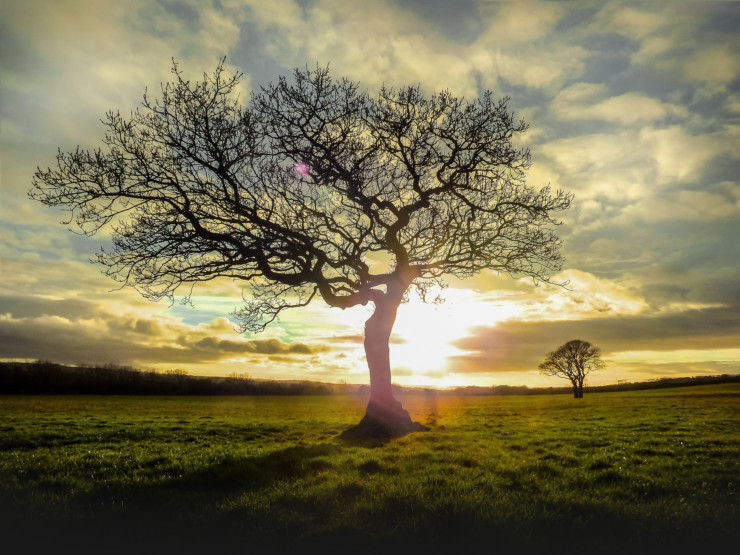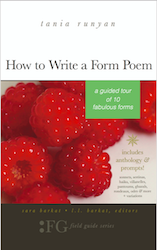Morgan’s Personification Technique
Some authors can take our breath away when we least expect it. C. E. Morgan did just that when I first read the following two sentences in her novel All the Living, that use personification.
The school carried her into a deeper cleavage of the mountains than the one she had known at her uncle’s trailer, which jagged out like an aluminum finger from a limestone wall topped by firs, bone out of bone. There the night carried on and on until ten in the morning, then the tip of the finger finally burned with its first sun.
In this short paragraph, Morgan breathes life into the main character’s (Aloma’s) school, her uncle’s trailer, the mountains, and the fir trees. She presents vivid, lifelike images that draw me in and help me connect emotionally with the scene while also enabling me to imagine it with clarity. It’s easier to be more closely entwined (on an emotional level and an artistic level) with cleavage, fingers, and bones than the objects being personified. These sentences are intimate and carnal and establish a sensual, bodily tone in the work. When I see the picture of the mountains, the school, the trailer, and the trees; Morgan’s personification and description help me imagine specific details of this story’s place that I wouldn’t imagine if she wrote, “The school was deeper in the mountains than her uncle’s trailer by the limestone wall and fir trees.”
When describing Aloma’s interactions with her piano instructor, the narrator includes Mrs. Boyle’s explanation for the purpose of silence in music:
She said the music was found in the silence as much as sound. The pauses birthed the phrase and funeraled it too, the only thing that gave the intervening life of rising and falling pitch any meaning. Without silence there was no respite from the cacophony, the endless chatter and knocking, the clattering pitches.
Associating musical pauses with birth and death not only personifies music and the silences contained within, but it also encompasses the entire cycle of life—the beginning and the end and maybe even a new beginning. It’s almost impossible for me to see the words “birthed” and “funeraled” without being moved on a deeper level beyond the text at hand, thinking about my own connections with life and death and giving life and witnessing death. And silences in music become more meaningful for me outside of their mention in this novel. All the Living’s narrator becomes a narrator of my own story when I listen to music and notice the silences in a new way.
In another scene, Aloma drives past a church picnic instead of stopping, parking, and attending it. The narrator says Aloma woke to her surroundings. Morgan writes,
The dust breathed up off the soil on the sides of the road and whispered out onto the blacktop, swirling into tiny eddies which the wind moved, but barely. She spied a tree that had begun to turn early in defeat. Her eyes were wide to the miscarriage of the summer, the ruth and pity of it.
Breathing and whispering are excellent word and image choices here because they present a picture of the dust waking up while Aloma wakes up to her own reality. It’s a sort of fairy dust effect. Trees that feel defeated and a season that has miscarried and not had the opportunity to become all it was meant to be are also appropriate for the mood Morgan is establishing. This use of personification gives me a sense of blurred lines between the physical setting of the road and Aloma’s internal state. Is she experiencing a stirring up within her while also coming to terms with the fact that she has certain dreams and desires that might never be realized? Is there a blurring and mingling of her current circumstances and her hopes for what might be?
Whenever I read All the Living and follow Morgan’s winding trail with stunning bits of personification dropped along the way, I can’t help but think the author has led me to places I would have never encountered without her employment of this literary device.
BUY ‘HOW TO WRITE A FORM POEM’ NOW!
Here’s an example of adding personification to my own work:
Before:
I’m euphoric; the sun is brighter, the sky is clearer, and colors are bolder. There’s a photo waiting to be taken everywhere I look, so I’m constantly snapping pictures with my iPhone. But I’m also paranoid and hallucinating. There are too many connections and coincidences which provide evidence of a conspiracy. My husband, Tim, is in on it. My daughter and son are, too. My brain is engaged in a game of tug-of-war and insanity is winning.
After:
I’m euphoric. The sun is brighter and seems more awake. The sky is clearer—it has bathed itself in the bluest of blues. All colors are bolder like dancers on a stage basking in their spotlights. There’s a photo waiting to be taken everywhere I look, so I’m constantly snapping pictures with my iPhone. But I’m also paranoid and hallucinating. There are too many connections and coincidences running around the playground of my mind, providing evidence of a conspiracy. My husband, Tim, is in on it. My daughter and son are, too. My brain is engaged in a game of tug-of-war and insanity is winning.
Your Turn:
Rewrite a couple of paragraphs of one of your own scenes with more personification and see what happens.
Photo by Martyn Fletcher, Creative Commons license via Flickr. Post by Charlotte Donlon.
- Read Like a Writer: Second Person Narrative Voice in Claudia Rankine’s “Citizen: An American Lyric” - December 5, 2018
- Read Like a Writer: C.E. Morgan’s Personification Technique in “All the Living” - October 17, 2018
- Read Like a Writer: Mary Oliver’s “Upstream” - September 5, 2018




Donna Falcone says
This is so interesting, and helpful. This is something I try to do, more and more. I’m really glad you shared your own writing samples.
Donna Falcone says
…the sun is brighter and seems more awake! I love that!
Charlotte Donlon says
Thanks so much for reading and engaging!
This is definitely something I need to do more of in my own work. I’m glad to have a great model of how to approach using personification.
L.L. Barkat says
Charlotte, thanks so much for tackling this. 🙂
I think personification is one of the most powerful techniques we have available to us as writers—and one of the most famously difficult. It is so easy to devolve into the obvious, or the trite, or the overdone. And yet. I realized, upon considering the technique, that it’s one I employ constantly, especially in my poems. But I do it in the leanest of ways—only hinting—which is, I think, how it can work best. The reader leaves our words, undistracted by excessive detail which they sometimes find themselves evaluating, and rather with a lingering sense that something powerful happened to them when they read.
To do this, I like to choose verbs and nouns and prepositions that are the essentials of the piece rather than add-ons. I was thinking, for instance of a poem (not necessarily one of my best, but it makes the point) that I recently went back to, to consider what was at work in it. It’s the verbs (touching, traverse, extend, find), the preposition (over), and the nouns (firs, lip). These are, at base, personifications of the trees and the geography, that then lead us to a more deeply personal experience (in this case, romantic 🙂 ).
After a Photograph of Dark Firs
You see how the trees are touching
how the gap in the sky is only white space
how they are drawn to traverse, extend, find
each other over time,
and the road keeps going
over the lip of what is seen.
Charlotte Donlon says
Thanks so much for your thoughts on this. I love what you said about hinting and not overdoing personification. And the poem you included is beautiful. Your use of personification is perfect here. I *can* see the trees touching and finding each other and the lip of the road.
Megan Willome says
Thanks, Charlotte.
I’ve recently read a couple of children’s poetry books by Kristine O’Connell George (one will be November’s Children’s Book Club selection), and she does a lot of personification: a garden hose, eggs, a spider. She opened my mind to what is possible, even for a young audience.
Charlotte Donlon says
Those books sound terrific. I’ll make sure to track them down. I’ve seen young poets do amazing things with words. I love that there are people out there offering young readers great poetry!
Bethany Rohde says
Thank you for sharing your before and after example. Interesting to see how the personification plays out. 🙂
Charlotte Donlon says
Thank you! And thanks for reading! I plan to keep playing with and employing personification in my work. I do want to do more “hinting” with personification that L.L. Barkat mentioned here in a recent comment.
Callie Feyen says
Charlotte, your explanation is helpful for me as a writer, but also as a reader. I think understanding and explaining HOW a book (or essay, or poem) works is actually more important than saying, “This is so good!”
Charlotte Donlon says
That’s a great point! I agree. It is nice to go a bit deeper and explore how a piece of writing works.
Will Willingham says
Charlotte, such a great look at this technique. And what I really love about these pieces is not just talking about the device itself, but looking at it in the context of writing where it’s really well done.
Personification, as you and Laura point out, is not easily done well. When it works best for me (as a reader) is when I don’t notice that it’s been done, or rather, that my reading brain doesn’t necessarily notice it, but I have a sense of it in my body. Without even being familiar with the rest of Morgan’s novel, I have that sense when I read that first paragraph.
Thanks for this insight into both reading and writing well. 🙂
Charlotte Donlon says
I usually have the same experience. When I first read this novel, I wasn’t looking at the various literary techniques the author employed. It was after I finished the book when I went back and tried to figure out what she did that was so effective beyond telling a good story. When I saw her use of personification, I was like, “Oh. Maybe that’s one way she pulled me in.”